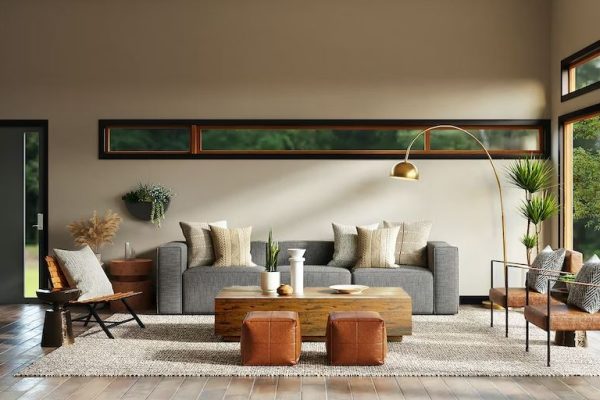Types of Panel Blinds
Panel Blinds can be found in many homes around the country. They are easy to manage and they are perfect for sliding glass doors, patio doors, and large windows because of their generally larger size. There is a wide variety of types available but panel blinds fall under two main categories. Traditional vertical blinds or modern horizontal blinds. In this article, we will go over some of the most well-known types of Panel Blinds from each category.
Vertical Panel Blinds:
Vertical panel blinds have an angled headrail which allows them to fold together and stack on top of themselves when not in use. It usually comes with square plastic vanes that attach inside the headrail at intervals that allow light to enter without compromising privacy. Metal slats may also be used. We offer a wide variety of vane colors and sizes to suit all needs.
Fabric Options:
This type of Panel Blinds come in many different fabric options. We offer them in 100% Solution Dyed Polyester. In-Ovation, Blockout, Light Filtering, or Room Darkening. All fabrics are machine washable and require no ironing after washing.
Polyester is an extremely budget-friendly option that comes in a matte finish with the look and feel of cotton but without any fraying or fading concerns. It comes in countless color options and stays virtually wrinkle-free year-round. So you don’t need to worry about taking it down during the holidays for fear of wrinkling up your blinds.
Fabric Shades are also available if a fabric option is what you’re looking for. This option is similar to drapery fabric. When closed it offers the same look as a vertical blind with the ability to gather up on each side and tie together with a decorative bow at the back of your window.
These are great options for kitchens where there may be spills or messy hands from cooking that would damage a standard polyester shade. They come in numerous colors, textures, patterns, and prints so they add some personality and flair to any room in your home!
Vertical Blinds Pros:
Vertical panels offer privacy and light control when opened but can stack out of view when not needed. It’s easy to lift them up and stack them on top of the headrail. It’s quick and efficient for larger windows or sliding glass doors.
Vertical blinds are also one of the most budget-friendly options. Because they do not require a wand or valance to operate, just lift and lower. They can be used in almost any room in your home and even make great outdoor shades. Under an awning where larger window coverings wouldn’t fit.
Vertical Blinds Cons:
Vertical panels may sometimes look out of place in rooms with smaller windows such as bathrooms, hallways, or bedrooms but this is easily fixed by simply adding a valance! If you have children or pets that you don’t want climbing on your window treatments. Then vertical panels may not be the best option for you. While it’s easy to lift the blinds up, it is a little harder to pull them down at times.
Horizontal Panel Blinds:
These types of blinds offer fantastic light control and privacy. But do not stack well when not in use as the vanes are usually inside a pocket on one side of the headrail. Which makes them take up more room than traditional vertical panels. The vanes may be fabric or metal depending on your needs and preferences.
The horizontal panel blind offers a straight up and down look that comes in many color options, prints, patterns, fabrics, and sheer options for those who want not only light control but also some privacy while still allowing natural sunlight into their home. These are great options for kitchens, living rooms, bedrooms, and bathrooms.
Horizontal Panel Blinds Pros:
Great for sun blocking on wide windows or sliding glass doors that don’t need to be moved up or down throughout the day.
They offer light control as well as privacy but allow more natural light than traditional vertical blinds which is great. If you enjoy a little extra morning sunlight in your bedroom!
Horizontal panels are also budget-friendly because they typically require only one lift cord (usually located at the bottom of the headrail). Instead of two like their vertical counterparts. This makes them easier to operate when compared to blinds with an in-head wand system and external cords.
Horizontal Panel Blinds Cons:
These types of windows do not stack well on each other when not in use as they are typically inside a pocket on the headrail. But this is easily overcome with blind stacking rods!
Because horizontal vanes take up more space than standard vertical panels they cannot be used in smaller windows. However, these types of blinds can be made to fit any size window!
Also if you have children or pets that you don’t want climbing on your window treatments then this style may not be the best option for you.







